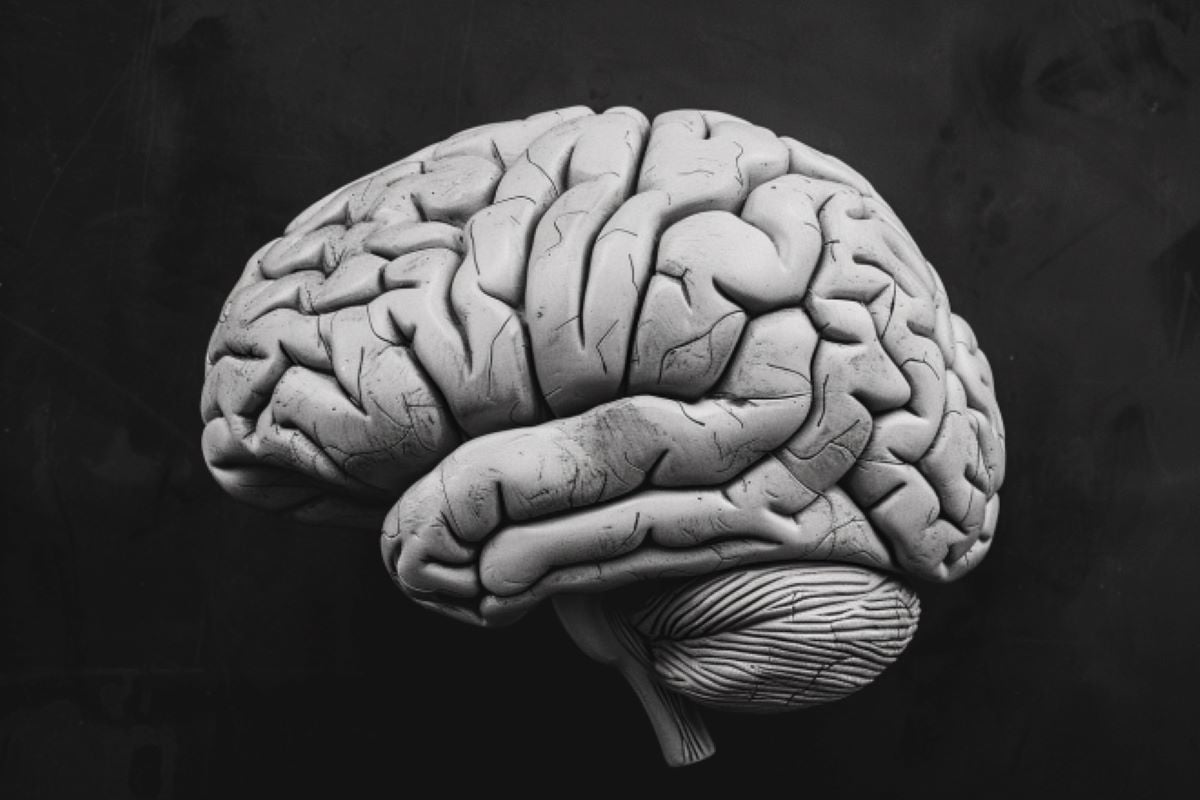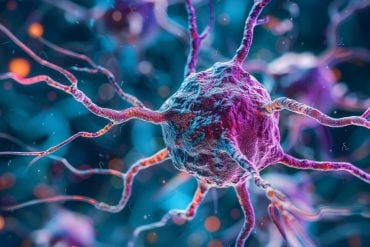Summary: Researchers have advanced the understanding of pediatric DIPG tumors. DIPG, a highly aggressive brain tumor in children, is driven by the H3K27M mutation and resists radiation therapy.
The team discovered that these tumors use dual pathways to produce purines, which helps them evade treatment. By genetically blocking these pathways, they enhanced the efficacy of radiation therapy.
Key Facts:
- DIPG tumors are driven by the H3K27M mutation and resist radiation.
- These tumors use two pathways to produce purines, aiding their survival.
- Blocking these pathways genetically improved radiation treatment in animal models.
Source: University of Michigan
Researchers at the University of Michigan Health Rogel Cancer Center are one step closer to understanding how pediatric DIPG tumors work.
Diffuse intrinsic pontine glioma, or DIPG, is the most aggressive pediatric brain tumor and incredibly difficult to treat since surgery isn’t feasible and recurrence is likely after radiation.
These tumors are often defined by the H3K27M driver histone mutation. Rogel researchers, led by Daniel Wahl, M.D., Ph.D., wanted to understand how this mutation affects DIPG tumor metabolism and influences radiation resistance.

“These questions pointed us straight to purine metabolism,” said Wahl, associate professor of radiation oncology and neurosurgery.
The findings were published in Cancer & Metabolism.
Wahl’s team has previously explored how purines are metabolized in adult glioblastoma, including a clinical trial to see how blocking purine metabolism improves treatment success.
Here, the team tried a similar method of inhibiting purine synthesis. While it worked well in DIPG cells, it was less impressive in animal models.
Wahl explains that, unlike many adult glioblastomas, DIPG tumors seem to rely on two different routes to make purines. He likens it to a road with two on-ramps.
“In adult GBMs, one of these on-ramps seems to be blocked, almost like it’s under construction. If you block the second on-ramp with a drug, it’s a real problem for the tumor. But in these pediatric brain tumors, both on-ramps appear to be wide open. So a drug that just blocks one of them doesn’t really slow down the DIPGs.”
Although there isn’t a drug available to block this “second” on-ramp, Wahl was able, through genetic silencing, to stop purines from being made inside the cell. “When we did that, radiation worked great,” Wahl said.
Erik Peterson, lead author and cancer biology graduate student agrees: “A better understanding of how these tumors evade treatment means that we’re better equipped to develop new strategies to beat them at their own game and improve the outlook for kids with this disease.”
Next, the researchers want to build on these findings to better understand why pediatric DIPG tumors rely on a different route from adult tumors, and how they can develop therapies to block it. With this additional work, the research team is hopeful that they could make a dent in this disease for patients in the future.
Additional authors: Peter Sajjakulnukit, PhD, Andrew J. Scott, PhD, Caleb Heaslip, Anthony Andren, Kari Wilder-Romans, Weihua Zhou, PhD, Sravya Palavalasa, MBBS, PhD, Navyateja Korimerla, PhD, Angelica Lin, Alexandra O’Brien, Ayesha Kothari, Zitong Zhao, Li Zhang, PhD, Meredith A. Morgan, PhD, Sriram Venneti, MD, PhD, Carl Koschmann, MD, Nada Jabado, MD, PhD, Costas A. Lyssiotis, PhD, Maria G. Castro, PhD
Funding: ChadTough Defeat DIPG Foundation, Alex’s Lemonade Stand, Rogel Cancer Center.
About this brain cancer research news
Author: Anna Megdell
Source: University of Michigan
Contact: Anna Megdell – University of Michigan
Image: The image is credited to Neuroscience News
Original Research: Open access.
“Purine salvage promotes treatment resistance in H3K27M-mutant diffuse midline glioma” by Daniel Wahl et al. Cancer & Metabolism
Abstract
Purine salvage promotes treatment resistance in H3K27M-mutant diffuse midline glioma
Background
Diffuse midline gliomas (DMG), including diffuse intrinsic pontine gliomas (DIPGs), are a fatal form of brain cancer. These tumors often carry a driver mutation on histone H3 converting lysine 27 to methionine (H3K27M). DMG-H3K27M are characterized by altered metabolism and resistance to standard of care radiation (RT) but how the H3K27M mediates the metabolic response to radiation and consequent treatment resistance is uncertain.
Methods
We performed metabolomics on irradiated and untreated H3K27M isogenic DMG cell lines and observed an H3K27M-specific enrichment for purine synthesis pathways. We profiled the expression of purine synthesis enzymes in publicly available patient data and our models, quantified purine synthesis using stable isotope tracing, and characterized the in vitro and in vivo response to de novo and salvage purine synthesis inhibition in combination with RT.
Results
DMG-H3K27M cells activate purine metabolism in an H3K27M-specific fashion. In the absence of genotoxic treatment, H3K27M-expressing cells have higher relative activity of de novo synthesis and apparent lower activity of purine salvage demonstrated via stable isotope tracing of key metabolites in purine synthesis and by lower expression of hypoxanthine-guanine phosphoribosyltransferase (HGPRT), the rate-limiting enzyme of purine salvage into IMP and GMP. Inhibition of de novo guanylate synthesis radiosensitized DMG-H3K27M cells in vitro and in vivo. Irradiated H3K27M cells upregulated HGPRT expression and hypoxanthine-derived guanylate salvage but maintained high levels of guanine-derived salvage.
Exogenous guanine supplementation decreased radiosensitization in cells treated with combination RT and de novo purine synthesis inhibition. Silencing HGPRT combined with RT markedly suppressed DMG-H3K27M tumor growth in vivo.
Conclusions
Our results indicate that DMG-H3K27M cells rely on highly active purine synthesis, both from the de novo and salvage synthesis pathways. However, highly active salvage of free purine bases into mature guanylates can bypass inhibition of the de novo synthetic pathway. We conclude that inhibiting purine salvage may be a promising strategy to overcome treatment resistance in DMG-H3K27M tumors.






